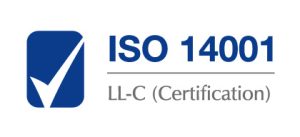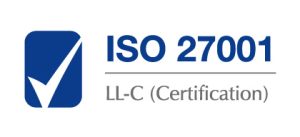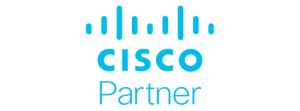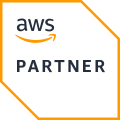The year is drawing to a close. Therefore, it is time to check which course you have already set for the future of your company. And where you might still need to readjust.
This course concerns your IT department in particular. Because the execution of the IT landscape today determines the performance of the entire company. Do not run the risk of lagging behind your competitors! To do so, you as an IT manager or managing director are faced with the challenge of identifying the relevant IT trends of the coming years at an early stage. And then to adapt these in your company.
But not every hype offers you added value. We have therefore summarized the 7 most important IT trends. You will hardly be able to avoid them in the next few years.
International cybersecurity standards will determine your destiny

Increasingly, the weal and woe of a company no longer rest solely with its own IT security department. With cybercrime-as-a-service (CaaS), a lucrative—albeit illegal—global business segment is increasingly developing. According to a study by IDC, 70% of the companies surveyed have already been affected by ransomware attacks. As a result, there is growing pressure on companies to implement cybersecurity mechanisms across the supply chain. At the same time, the past attacks on software-as-a-service providers such as Solarwinds and Microsoft in 2021 have shown one thing; strong IT security inside your own company is not enough. If there is a cyber attack on a SaaS provider, this also has an impact on the security of the connected systems and companies. In the future, this will lead to increasing global harmonization of security standards in politics and business.
But just as important as securing globally networked systems is securing your own internal IT landscape. Fortunately, as the danger increases, so does the realization within companies that more must be done to secure their IT systems. In addition to the technical implementation of security mechanisms such as improved authentication procedures or malware detection programs, companies are increasingly focusing on awareness training for employees.
Future-oriented growth in the Multi-Cloud

Using the “one cloud” was yesterday! Companies are increasingly turning to multi-cloud structures to map their complex business processes in the best possible way.
In a multi-cloud infrastructure, they can harmoniously combine several cloud models, services, and providers. At the same time, they are loosening their dependence on one provider. At the same time, the multi-cloud opens up new flexibility for companies in the use of cloud services compared to the traditional hybrid cloud model. However, the increasing complexity of such a cloud landscape increases the demand on IT departments concerning cloud management. Therefore, the demand for employees or service providers who can take over this complex task is increasing.
Process automation can be found at every step

The fact that work processes are increasingly being automated is nothing new. We are particularly familiar with this from the manufacturing industries. With the increasing digitalization of all areas of work, this is now spreading to other areas of business. A study by GitHub, for example, shows that automation in the software development environment is a strong productivity driver. This finding can be applied to other areas as well. Concepts and technologies such as Robotic Process Automation (RPA), Low Code/No Code, Cognitive Capture, Embedded AI, AIoT, or AIOps will therefore be indispensable in the future. This development, which we are currently mainly familiar with from large players, will also spread to smaller companies in the future. The implementation of process intelligence and automated data collection, for example in the areas of HR, recruitment, and marketing, will shape the business world in the future.
Modern Working as a Data Fabric

Increasing process automation requires and creates a large amount of data. The modern enterprise will therefore be data-driven. Process intelligence and automated data collection in all areas of the enterprise as well as within supply chain processes will provide the necessary multitude of analyzable data. The problem, however, is that each system, each application initially collects it differently. Breaking down these disjointed data silos and building out a single data management structure to analyze all collected data in one system is probably the biggest challenge for companies in the coming years. Only with the establishment of a data fabric can the data at hand be orchestrated and optimized; only a sufficiently high level of data quality enables companies to make better strategic decisions for their growth.
Software and IT service providers must face data privacy and compliance audits

In recent years, the political framework for data protection and security concepts has increased. Software providers and IT service providers are also increasingly feeling the effects of this development. Audits for the specific implementation of data protection guidelines in the respective country as well as increased compliance requirements are on the rise. This also means a change within the own IT department. IT managers will increasingly educate themselves in data protection as well as IT security issues.
An example? Increasing multi-cloud use confronts IT departments with complex data protection issues. After all, each cloud provider brings different data protection and security concepts to the table. Thus, in addition to technological expertise, data protection experts will also become important in the future to orchestrate the inconsistencies of the providers.
This development naturally also affects other departments that decide to introduce new software solutions to automate their processes. Because with the increasing amount of data in HR or marketing departments, for example, the potential for data leaks as well as for GDPR incidents also increases significantly.
Open-source experiences new high

Open-source is back in vogue thanks to cloud business; this has been recognized not only by IT departments in need of new software solutions but also by major vendors such as Microsoft. The once biggest enemy of the open-source idea now also offers open-source projects alongside their licensed products.
The advantages of using open source software are obvious for companies: the public code offers them maximum transparency as well as high security through peer-review processes. Development within a community also shortens release times and often leads to higher quality software than with closed code. At the same time, dependencies on a single vendor are reduced. In addition, open-source usually allows the code to be adapted to one’s needs. Finally, expensive licensing costs are often eliminated, since open-source companies usually limit themselves to selling only additional hosting and/or services.
Growth yes, but sustainable, please

One last trend should not be ignored: the focus on one’s sustainability. Awareness of one’s responsibility is growing more and more in the management floors—no longer just as a measure for marketing and PR, but also in terms of actually generated results.
Because those who want to be successful on the market in the long term must also be and become aware of their ecological footprint. This also includes IT departments: How high is the ecological footprint of your own IT department? What are the CO2 emissions of the company’s own and rented server landscapes? And above all: how can this be reduced or compensated for? How can hardware be disposed of in an environmentally friendly manner at the end of its business lifecycle?
A study shows that the positive effect on the environment is also linked to improved business results: companies that implement comprehensive measures for sustainable IT record better ESG ratings (61 percent) as well as higher customer satisfaction (56 percent) and realize tax benefits (44 percent).
Are you ready for the future of your company?








